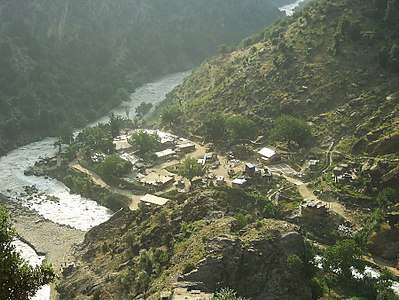Combat Outpost Keating

Combat Outpost Keating was a small American military base in Nurestan Province, in Afghanistan.[1]
After an attack on October 3, 2009, where the base was largely overrun, and 12 Americans and other defenders were killed, the base was abandoned.[1] Two Americans, Staff Sergeants Clinton L. Romesha and Ty Carter were awarded the Medal of Honor for their role in defending the base.[2]
Amy Davidson Sorkin, writing in The New Yorker, tried to answer the question why the base had not been moved, when it was found to be unsuitable.[3] She noted two claims the military put forward in its report: first, the resources to relocate the base had not been available because the brigade was concentrating on guarding a village that Hamid Karzai, president of Afghanistan, considered strategically important; second, the search for Bowe Bergdahl in June 2009 had used up resources.
In May 2016 CBS News profiled Staff Sergeant Romesha, after he published an account of his experiences at the base, entitled Red Platoon.[2] Romesha was critical of the choice of site for the base, calling it like being at the bottom of a bowl.
See also
References
- 1 2 3
Leo Shane II (2013-07-29). "Latest Medal of Honor brings COP Keating battle back into spotlight". Stars and Stripes. Washington DC. Retrieved 2017-11-05.
The White House decision to award Army Staff Sgt. Ty Carter with the Medal of Honor for bravery in Afghanistan once again puts the spotlight on the deadly 2009 battle at Combat Outpost Keating, and the controversy surrounding it.
- 1 2
"A Medal of Honor recipient's ongoing burden". CBS News. 2016-05-01. Retrieved 2017-11-05.
'These things aren't given out when something went right. A lot of stuff went wrong, and it's a heavy weight at some times.'
- ↑
Amy Davidson Sorkin (2010-02-05). "What Happened at COP Keating?". New Yorker magazine. Retrieved 2017-11-05.
COP Keating’s withdrawal was delayed when the assets required to backhaul base supplies were diverted to support intense brigade-level operations in Barg-e Matal in support of ANSF forces. Similarly, ISR assets that could have given the Soldiers at COP Keating better situational awareness of their operational environment were reprioritized to support Barg-e Matal as well as the search for a missing US Soldier in the south.